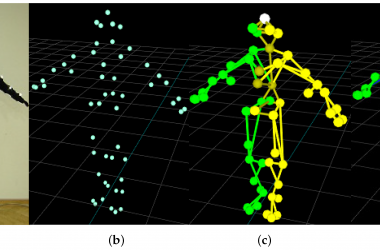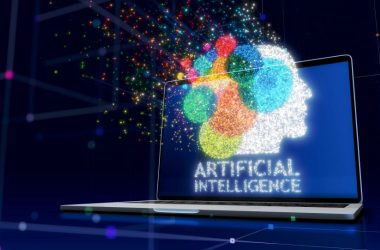Introduction
A paradigm change happens when Generative AI integration is effortlessly included in procedures for demand forecasting. This novel method uses past data to create predictive models, increasing precision.
These AI-Enhanced Supply Chain Efficiency can optimize supply chain strategies through ongoing learning, allowing them to adapt to changing market dynamics. Thanks to generative AI-integrated demand forecasting, businesses are empowered to cut waste, adapt production proactively, and quickly satisfy customer expectations.
The result is a supply chain that is effective, responsive, and equipped to manage the intricacies of contemporary marketplaces while lowering costs and raising customer satisfaction.
Well, in this blog, we will discuss the pointers such as how Generative AI responds to demand variations, minimizes interruptions, and redefines inventory management for best resource allocation, how Generative AI in demand prediction increases precision by analyzing large datasets and spotting subtle trends, etc., along with some real-life use cases.
The Power of Data-Driven Forecasting
Unleashing Insights: The Importance of Accurate Demand Forecasting
The future terrain will be shaped by precise demand forecasting, which is the foundation for supply chain efficiency boosted by AI. Generative AI-powered data-driven insights reveal trends that elevate inventory management. This method paves the way for sustainable behaviors by reducing waste and improving allocation.
Integrating moral AI strengthens this change and ensures ethical decision-making. In the future, supply chains will work fluidly, dynamically matching customer wants while reducing environmental impact, thanks to data-driven demand forecasting with Generative AI Solutions.
Bridging Data and Decision: How Data-Driven Insights Shape Supply Chains
Critical supply chain decisions are supported by data-driven forecasting, showing efficiency. Businesses can understand demand trends and foresee market volatility by examining historical and current data. These insights give businesses the power to decide wisely about distribution plans, inventory management, and production scheduling.
In addition to giving a glimpse of the present, data-driven forecasting reveals probable future situations, allowing for preemptive modifications to reduce risks and take advantage of possibilities. Making decisions based on data-driven insights ensures that logistics networks stay flexible, responsive, and proficient at satisfying customer demands in a constantly changing market.
Elevating Demand Forecasting with Generative AI
AI-Powered Precision: Enhancing Accuracy in Demand Prediction
Generative AI revolutionizes demand forecasting by delving deep into expansive datasets, refining accuracy for AI-powered inventory optimization. This advanced technology deciphers intricate patterns and correlations that human analysis might overlook.
Generative AI unearths hidden insights that advance supply chain strategy by thoroughly evaluating past sales, industry trends, and external factors. Businesses can gain a sophisticated understanding of demand changes with AI-driven supply chain data, enabling proactive modifications in resource allocation.
This capacity for demand forecasting optimizes inventory control and streamlines logistics, increasing operational effectiveness overall. The supply chain landscape changes due to generative AI’s transformative role in demand forecasting, ensuring that goods reach customers quickly, reducing waste, and taking full advantage of market opportunities with unmatched accuracy.
Beyond Traditional Methods: How Generative AI Adds Nuance to Forecasting
The strength of generative AI services is in spotting minute patterns that conventional methods frequently miss. It finds subtle relationships and anomalies by consuming enormous amounts of data and using advanced algorithms.
Understanding complex market dynamics and consumer behavior depends on these subtle insights. Beyond the obvious, generative AI detects anomalies and trends that can greatly impact demand. Businesses can make more accurate predictions, anticipate changes in the market, and modify their supply chain strategy thanks to their increased capacity to spot hidden trends.
By converting these insights into wise judgments and responsive supply chain management, generative AI improves the accuracy of demand forecasts and provides a competitive edge.
Navigating Supply Chain Challenges
Minimizing Variability: Generative AI’s Role in Handling Demand Fluctuations
The ability of Generative AI to respond to dynamic demand shifts is crucial for reducing supply chain disruptions in the context of data-driven demand forecasting. Maintaining equilibrium between inventory levels and consumer demand depends on this adaptability.
Since generative AI learns from real-time data rather of just historical trends, forecasts are kept up to date with changing market conditions. This flexibility minimizes inventory surplus or shortages through AI-powered modifications and streamlines inventory management.
Notably, applying moral AI concepts to the supply chain enhances this adaptability by encouraging wise choices while upholding operational integrity. Beyond forecasting, generative AI is crucial for altering how organizations respond to demand variations and ensuring operational stability while upholding moral principles.
Inventory Management Redefined: Optimal Resource Allocation with AI Insights
Beyond simple prediction, generative AI can optimize resource allocation and reduce surplus inventory in demand forecasting. It analyzes several data streams to identify demand trends that influence inventory levels.
This refined method reduces shortages and overstocking, improving supply chain effectiveness. Generative AI-integrated demand forecasting promotes accuracy in matching resource availability with customer demand, reducing waste, and enhancing overall operational efficiency.
Seamless Integration of Generative AI in Demand Forecasting
The Art of Integration: Incorporating Generative AI into Demand Forecasting Workflows
Generative AI integration with current demand forecasting techniques requires strategic dexterity. Businesses can gain better insights by integrating AI’s predictive capabilities with current procedures. Operations are simplified by generative AI-integrated demand forecasting, which harnesses the potential of AI without disrupting current workflows.
This seamless synergy uses previous data to make better forecasts, signaling a shift toward data-driven precision without abandoning tried-and-true methods.
Empowering Supply Chain Teams: Leveraging AI-Driven Insights for Smart Decisions
Strategic navigation is required to assist supply chain experts in utilizing generative AI insights. Utilizing Generative AI in demand forecast for resource allocation optimization will result in effective logistics and AI-powered inventory optimization.
This is how AI-Driven Supply Chain Insights are being used. With the help of this synergy, professionals may harness the potential of Generative AI and make wise judgments that will result in more efficient operations. Accepting AI’s involvement enhances the effectiveness of conventional methods, resulting in enhanced supply chain management results.
Addressing Ethical and Implementation Considerations
Ethical AI Integration: Balancing Data Utilization and Responsibility
Ethical AI Integration in Supply Chain considerations plays an important role when incorporating Generative AI into demand forecasting procedures. Transparency in data utilization, protection of personal information, and neutrality become essential.
Finding the right balance between the capabilities of AI and moral standards protects against unanticipated outcomes. Data sourcing, model fairness, and informed decision-making are all ethical factors that protect customer confidence and operational integrity.
Overcoming Challenges: Navigating the Path to Successful AI Integration
Following are the strategies to overcome potential hurdles and challenges during the implementation phase.
Comprehensive Training:
A detailed training program should be provided to teams to help them integrate AI and close the operational and technological gap.
Clear Communication:
Foster open communication between divisions to align goals and address issues in an efficient manner.
Gradual Integration:
Introduce Generative AI gradually to reduce disruption and give teams time to adjust and improve procedures.
Ethical Guidelines:
Create and implement standards for the proper integration of AI while upholding data privacy.
Continuous Evaluation:
Analyze the effects of AI on supply chain effectiveness regularly and revise your plans in light of your findings.
Realizing Supply Chain Optimization: Success Stories with Generative AI
Case Study: Streamlining Logistics with AI-Powered Demand Forecasting
UNILEVER:
A global leader in consumer goods, Unilever, has revolutionized its supply chain dynamics by leveraging the power of generative AI. Unilever has achieved great success in streamlining inventory management through AI and AI-driven demand projections by integrating powerful machine learning algorithms.
The AI system used by Unilever extensively uses market trends, historical data, and outside factors to estimate customer demand accurately. This thorough study enables the business to proactively manage production, distribution, and inventory levels, thereby reducing shortages and excesses.
By matching supply with actual demand, this cutting-edge strategy guarantees that Unilever remains sensitive to market trends. Unilever improves its supply chain and boosts consumer satisfaction, operational effectiveness, and environmental initiatives by leveraging the power of AI-driven insights. This invention serves as an example of how AI may reshape complex supply chain concepts.
Case Study: Inventory Efficiency Through Data-Driven Resource Allocation
Procter & Gamble (P&G)
Procter & Gamble (P&G), a prominent consumer goods manufacturer, has adopted generative AI to change how it handles its inventory. P&G has achieved optimal inventory management in a prominent instance by utilizing the power of generative AI. The organization uses cutting-edge algorithms that examine historical data, industry patterns, and several external factors to produce precise demand estimates.
One specific instance showcases P&G’s success: the company drastically reduced excess inventory levels of a popular product line. By employing generative AI-driven forecasts, P&G could align its production and distribution processes more precisely with actual demand, effectively eliminating the need for excessive stockpiling. This breakthrough resulted in substantial cost savings and elevated customer satisfaction by ensuring products were consistently available.
By strategically integrating generative AI, P&G demonstrates its commitment to operational excellence and responsiveness in a volatile market environment. It sets a high standard for effective inventory management in the consumer goods sector.
Conclusion:
This article examines the revolutionary effects of incorporating generative AI into supply chain demand forecasting. It highlights how Generative AI could improve demand forecasting accuracy and transform supply chain management.
Demand projections are improved by incorporating generative AI, allowing AI-Powered Inventory Optimization and AI-Driven Supply Chain Insights. Stockouts and overproduction are avoided because of the technology’s capacity for analyzing previous data, market trends, and outside influences.
This integration increases the supply chain’s sustainability and resilience while increasing inventory management’s effectiveness. Businesses may make wise decisions, maximize resources, and improve supply chain efficiency by utilizing the power of generative AI-integrated demand forecasting. This will ultimately spur growth and minimize any interruptions.
FAQs:
What is Generative AI-integrated demand forecasting, and how does it work?
Generative AI-integrated demand forecasting is an advanced method that blends demand forecasting in supply chains with Generative AI technology. It makes precise projections of future demand by using cutting-edge algorithms to assess historical data, market patterns, and many outside influences.
Generative AI, in contrast to conventional approaches, develops data-driven models that adjust to changing circumstances, increasing forecast accuracy. With the help of this integration, businesses may increase supply chain insights, optimize inventory levels, and make well-informed decisions that ultimately improve operational effectiveness and resource allocation throughout the supply chain.
How does Generative AI enhance supply chain efficiency through demand forecasting?
By improving demand forecasting, generative AI improves supply chain efficiency. It produces accurate predictions by examining historical data, market patterns, and external influences. These precise projections help minimize overstocking and stock-outs while optimizing inventory levels.
As a result, companies can increase the efficiency of their supply chains by streamlining operations, better-allocating resources, and ensuring seamless production and distribution procedures.
Can businesses of all sizes implement Generative AI?
Yes, generative AI can be used in companies of all sizes. Smaller firms can use cloud-based solutions and third-party services to integrate generative AI into their processes, whereas larger enterprises may have greater resources for deployment. Because of its flexibility and scalability, generative AI technology is available and adaptable for enterprises of all sizes.
What challenges arise when integrating Generative AI into demand forecasting?
Demand forecasting issues can include data complexity, model training needs, and potential biases in algorithms when integrating generative AI. To get beyond these obstacles and provide accurate and objective forecasts in supply chain management, it is crucial to ensure data quality, handle ethical issues, and manage computing resources.
How are ethical considerations addressed when utilizing AI-generated insights?
The use of accountable and transparent AI algorithms addresses ethical issues with using insights produced by AI. This entails careful data sourcing, reducing biases, and obtaining user agreement before using any data. Continuous monitoring, adherence to rules, and routine audits all contribute to the ethical and responsible use of insights produced by AI.










